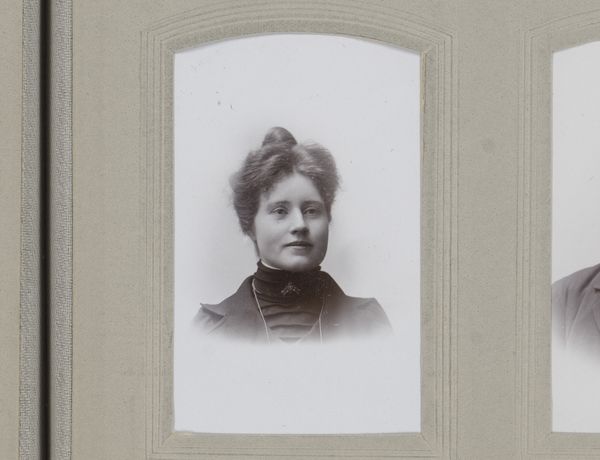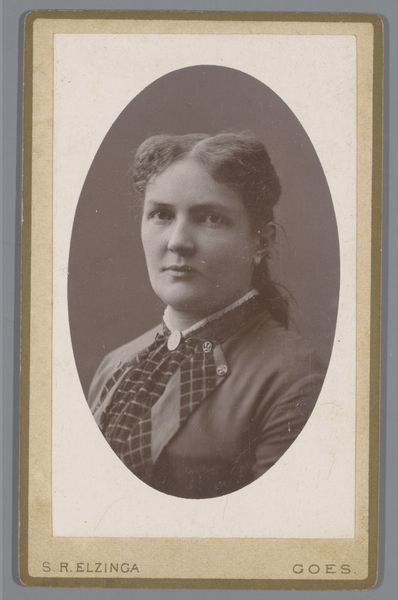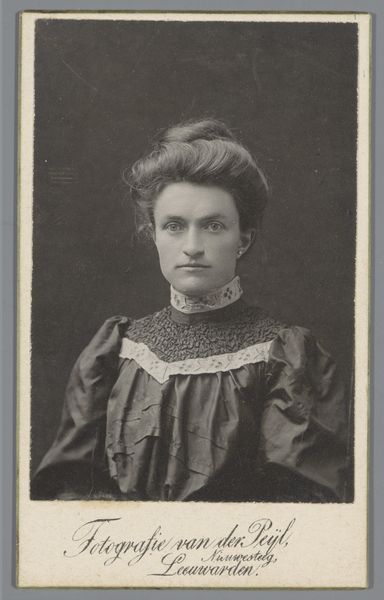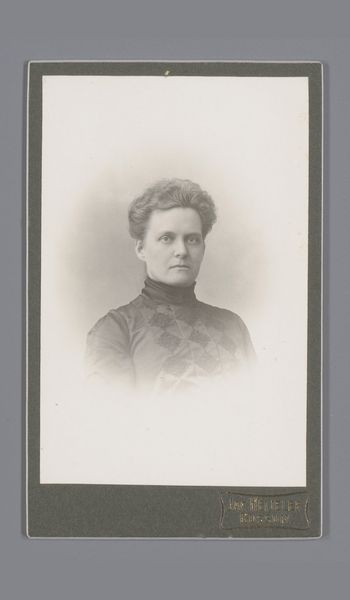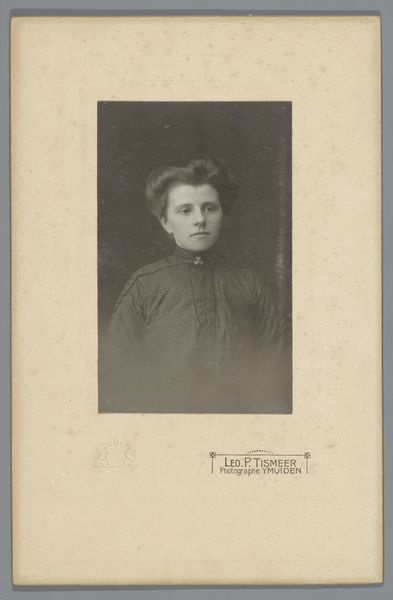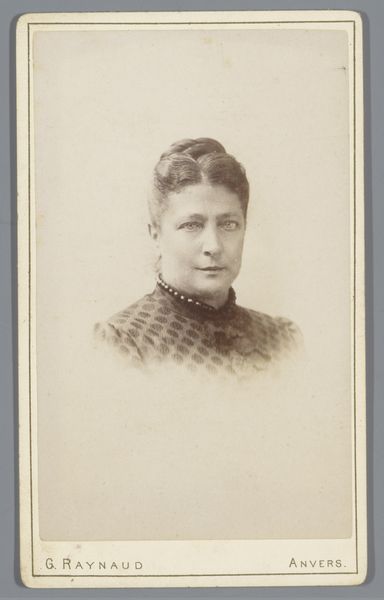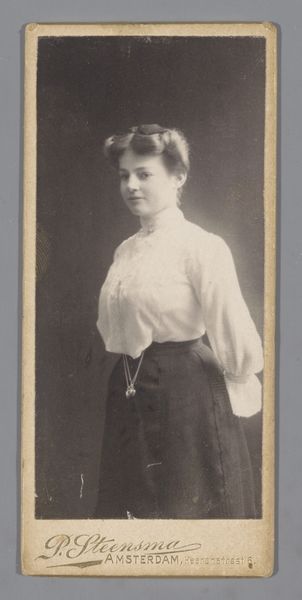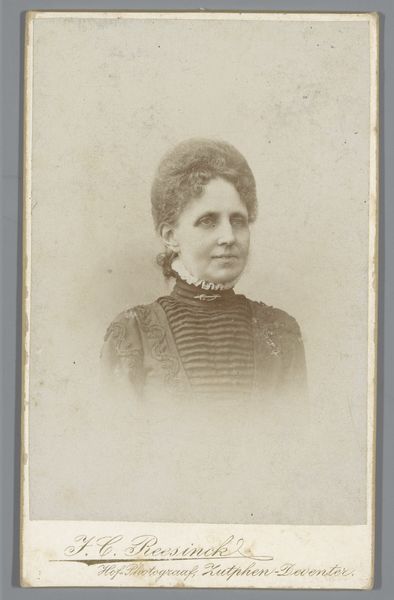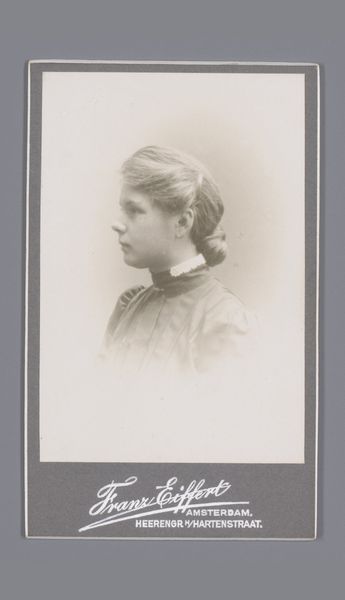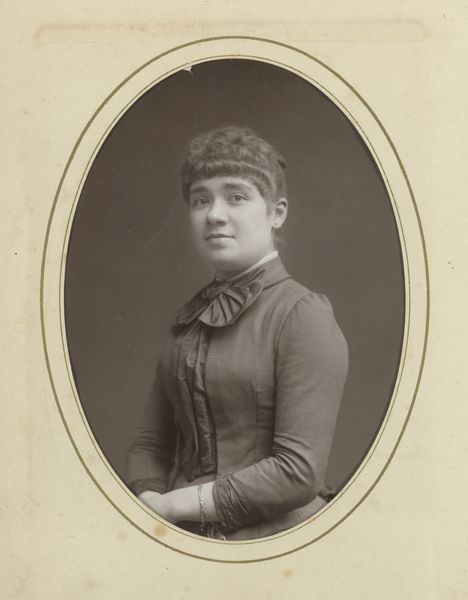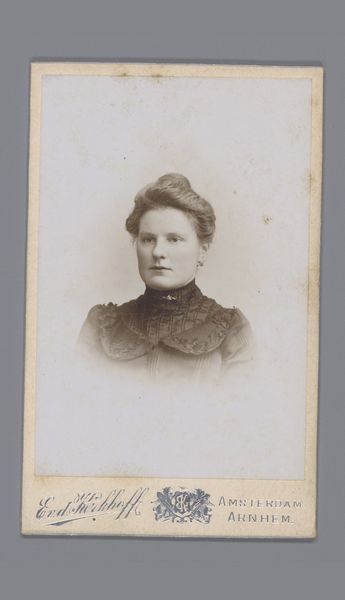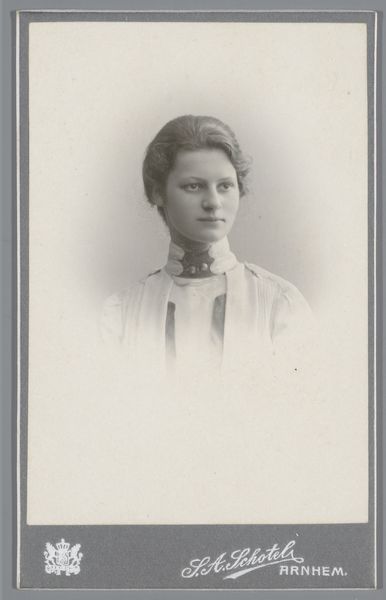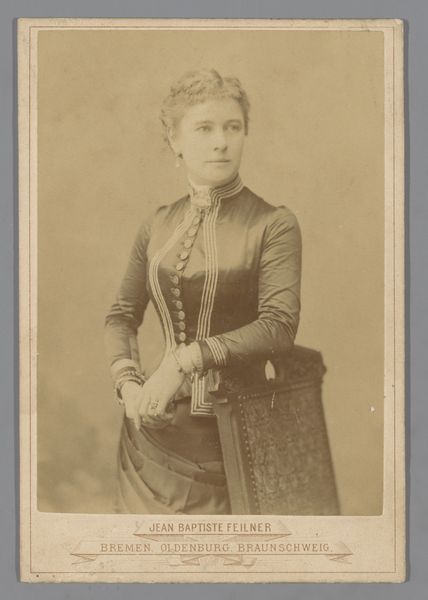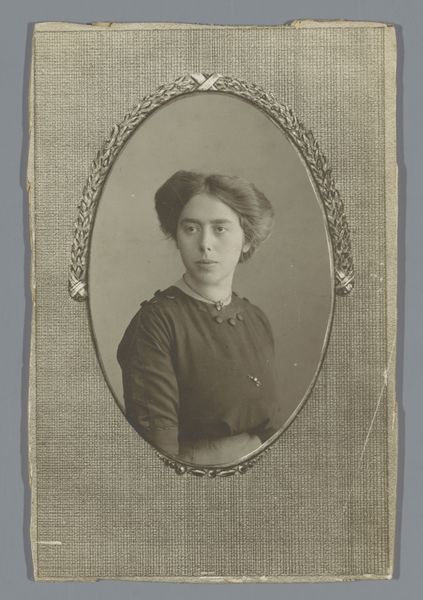
photography
#
portrait
#
pictorialism
#
photography
#
framed image
#
genre-painting
#
realism
Dimensions: height 107 mm, width 66 mm
Copyright: Rijks Museum: Open Domain
This photograph of an unknown woman was produced by J. Franke in the Netherlands. The image speaks volumes about the rise of photography as a social practice. In the late 19th and early 20th centuries, photography became increasingly accessible and affordable for the middle classes. This portrait, with its formal composition and the sitter's carefully styled hair and dress, reflects the growing importance of personal image and social presentation. Studios like Franke's played a key role, democratizing access to portraiture previously reserved for the wealthy elite. The woman's modest attire, high neckline, and simple jewelry suggest middle-class values of respectability and restraint. Who was she? Without further information, we can only speculate. But the photograph, as an artifact of its time, becomes a valuable document to understand the social and cultural norms of the Dutch middle class. To fully understand the image, one must research the history of photography, the social conventions of the time, and the specific context of the Netherlands. We can reflect on the meaning of art as something deeply embedded in its own social and institutional context.
Comments
No comments
Be the first to comment and join the conversation on the ultimate creative platform.
